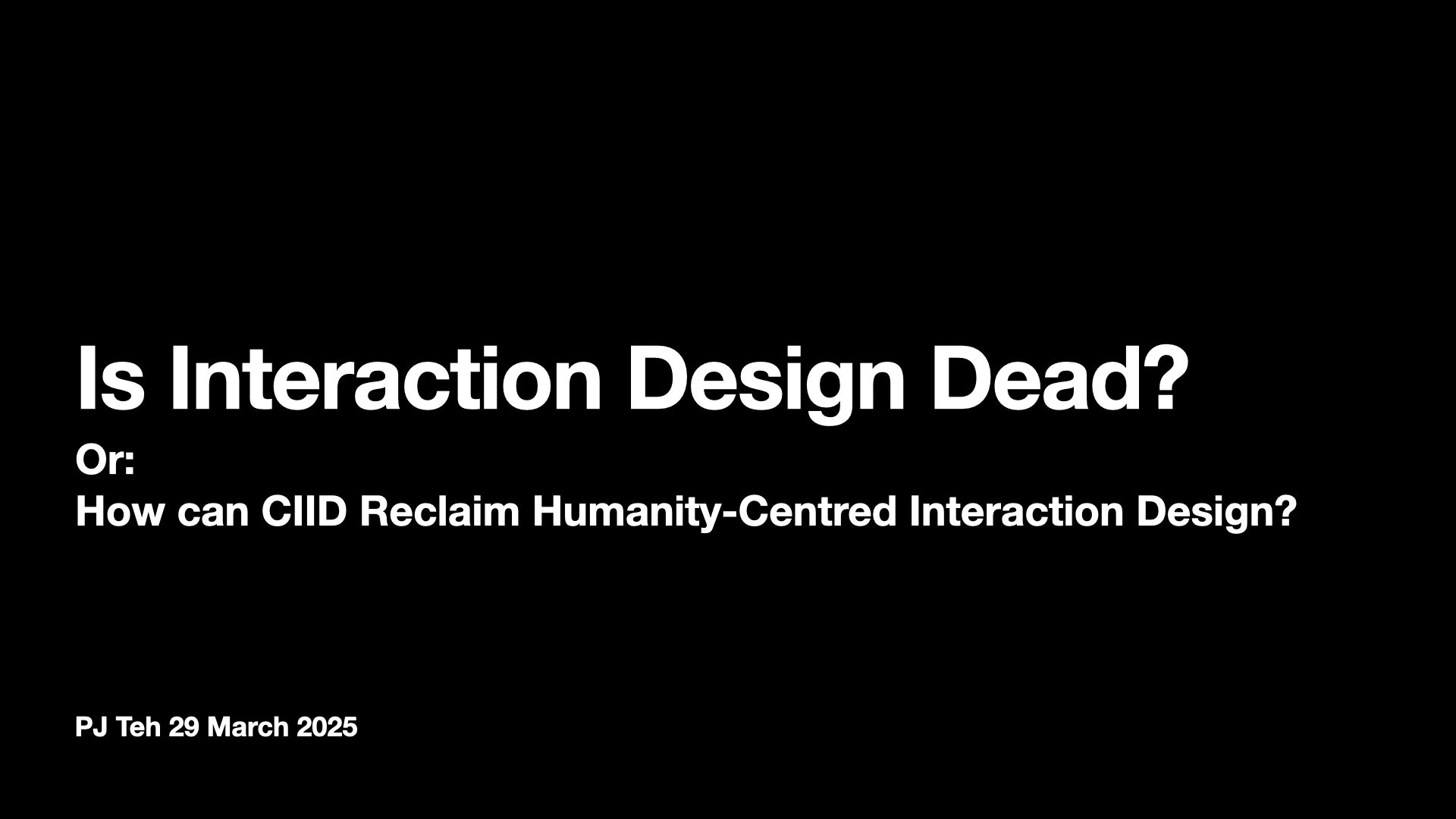
|
# |
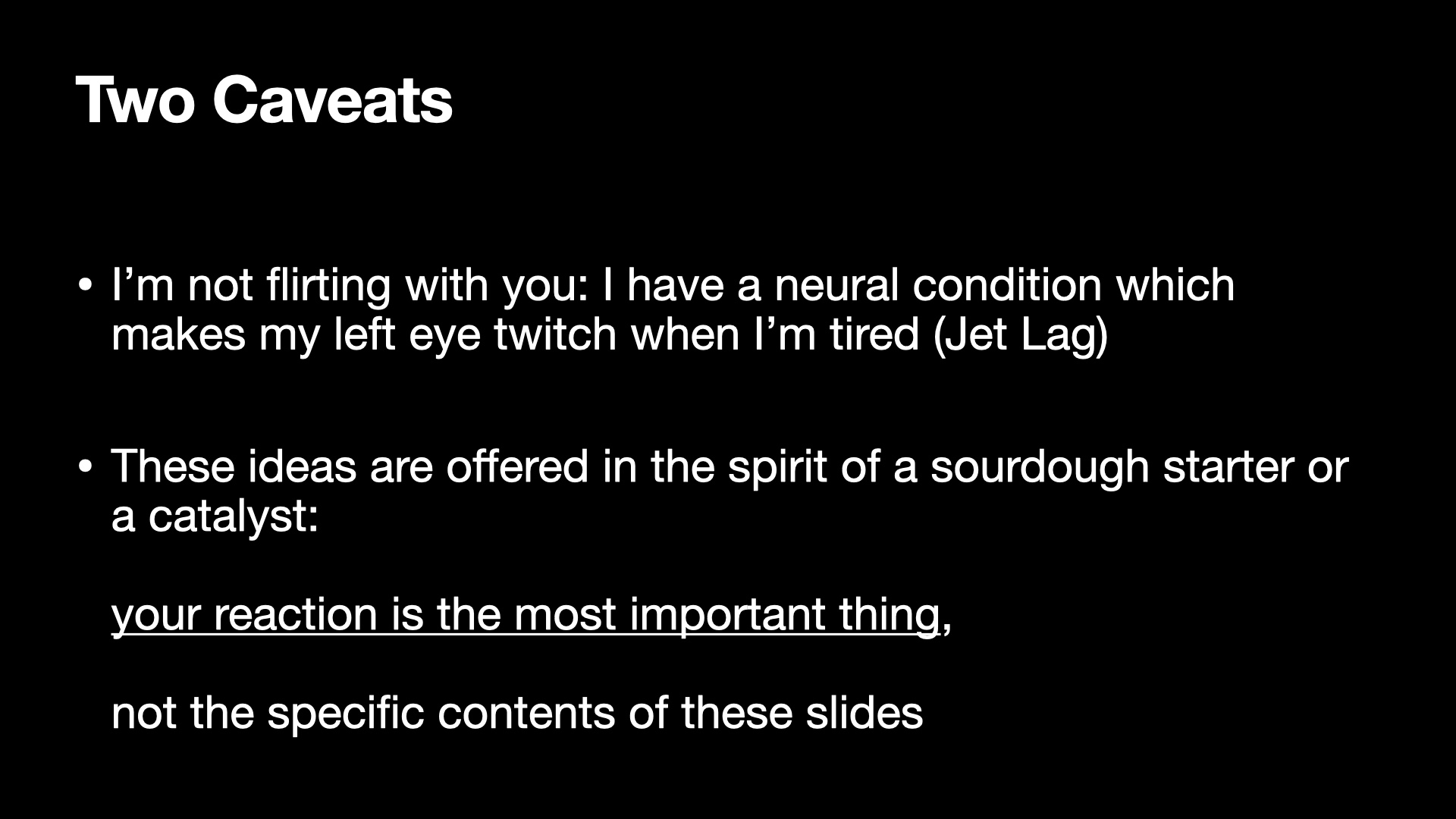
|
Two caveats about myself # |
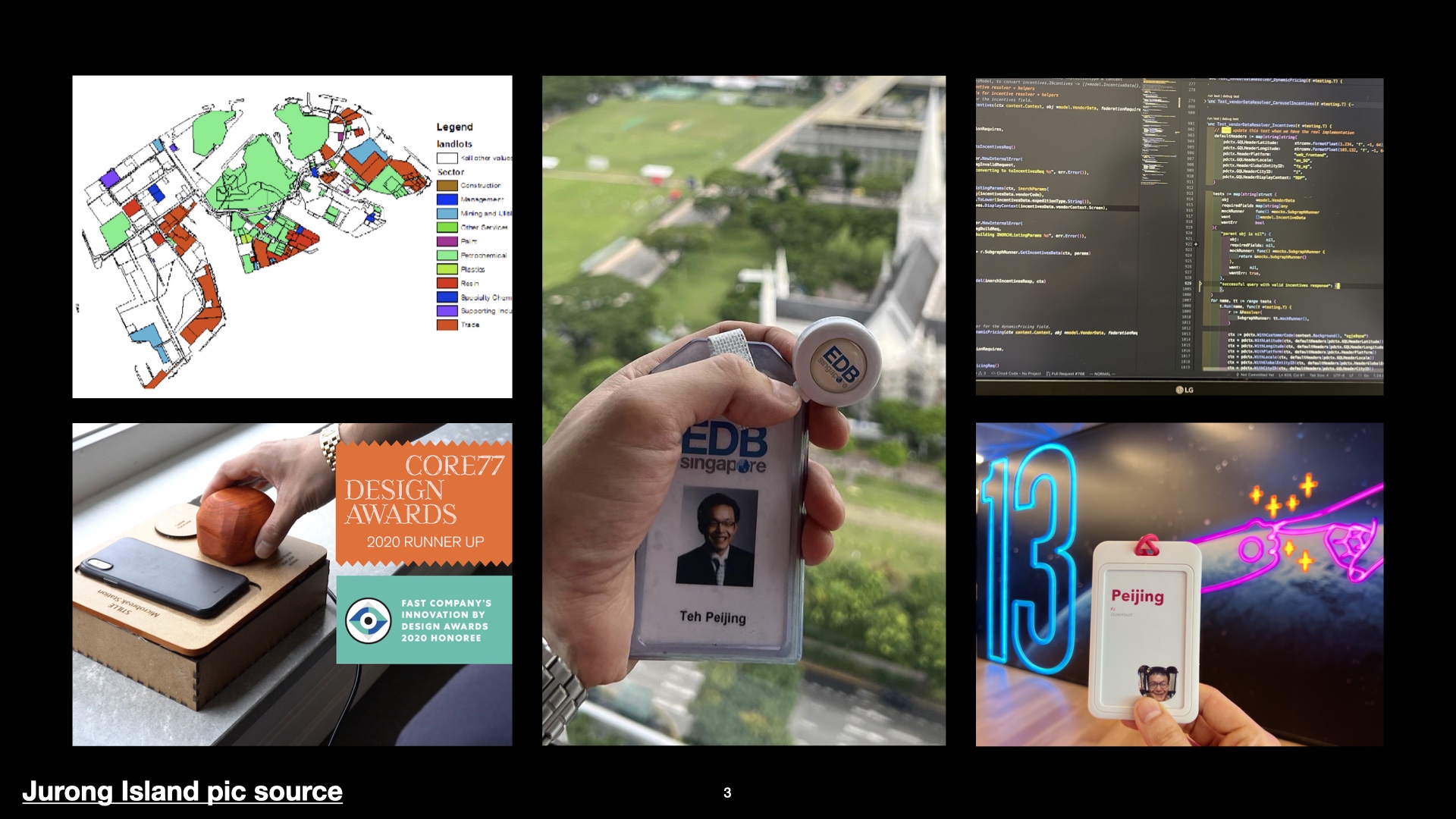
|
Intro of myself worked in the Singapore Economic Development Board (EDB)[, started with overseeing the petrochemical industry & got intimately hands-on with collaborative-design-style work; later got sent to India and also in Strategic Planning. Went to CIID in Copenhagen in 2019 for IDP 2019 Went back to EDB to serve out my bond for two years. Quit in 2022 to learn coding Hypothesis that backend, service design and product management are kinda at the same level of abstraction. Tested that hypothesis by completing a backend software engineering internship at foodpanda/deliveryHero, literally earlier this week, which ended this week. # |

|
One big lesson I took away from my traineeship was that backend engineers of these large apps collect data that would be a service designer’s dream. This is a screenshot of one of the dashboards (and there are many!) showing the app’s activity. But there is also a similar dashboard for tracking user activity on the apps: your every click, pause is recorded. # |
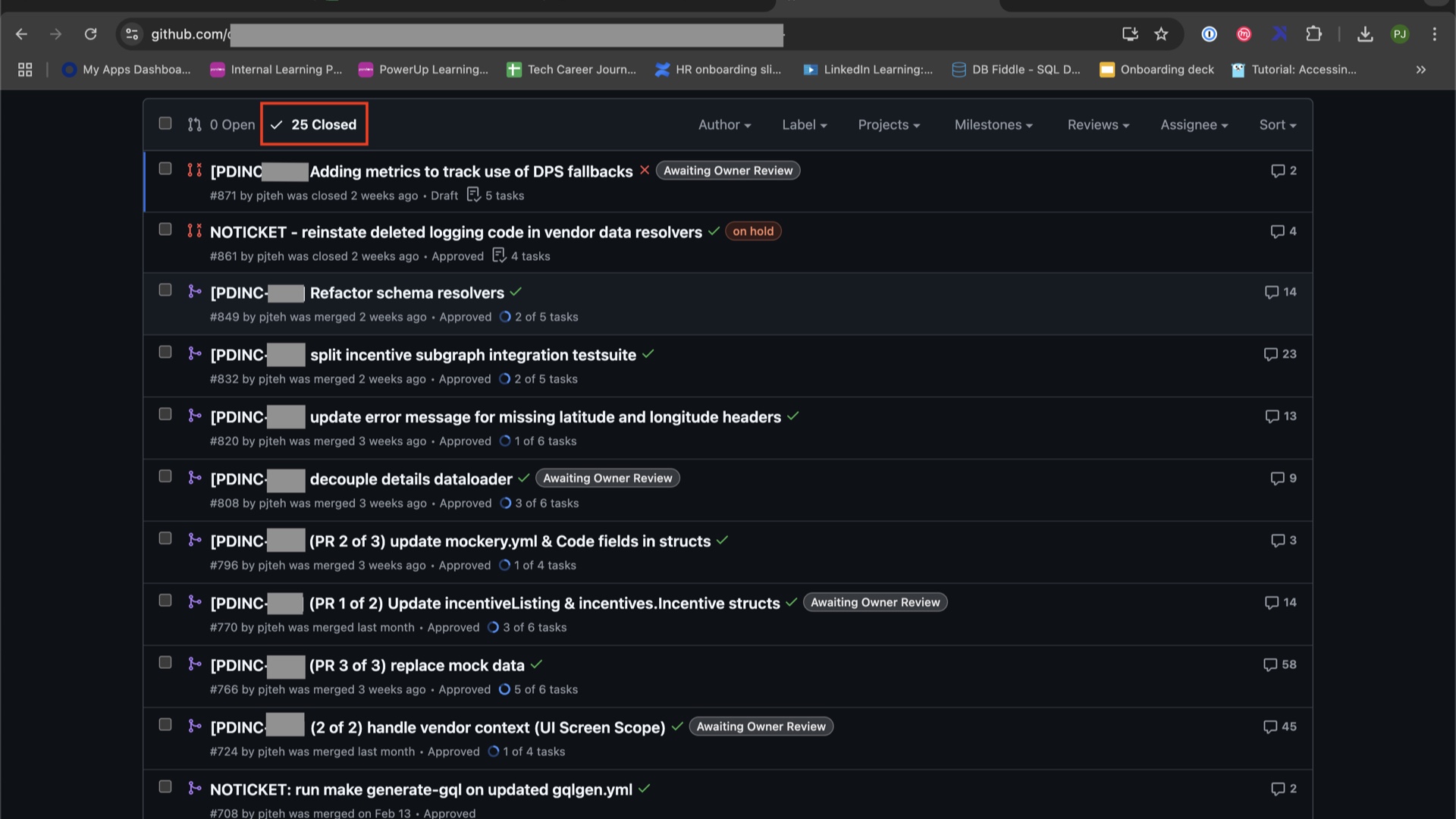
|
As I looked through the 25 pull requests I completed in my traineeship, I asked myself, What did I learn? backend engineers have a lot more power than service designers or product managers: a microservice or app can survive without service design or product management, but it’s often dead without a backend engineer. With so much data, there’s no real need for a large team of designers Beyond what I learned, - what exactly did I accomplish? What aim have I furthered? # |
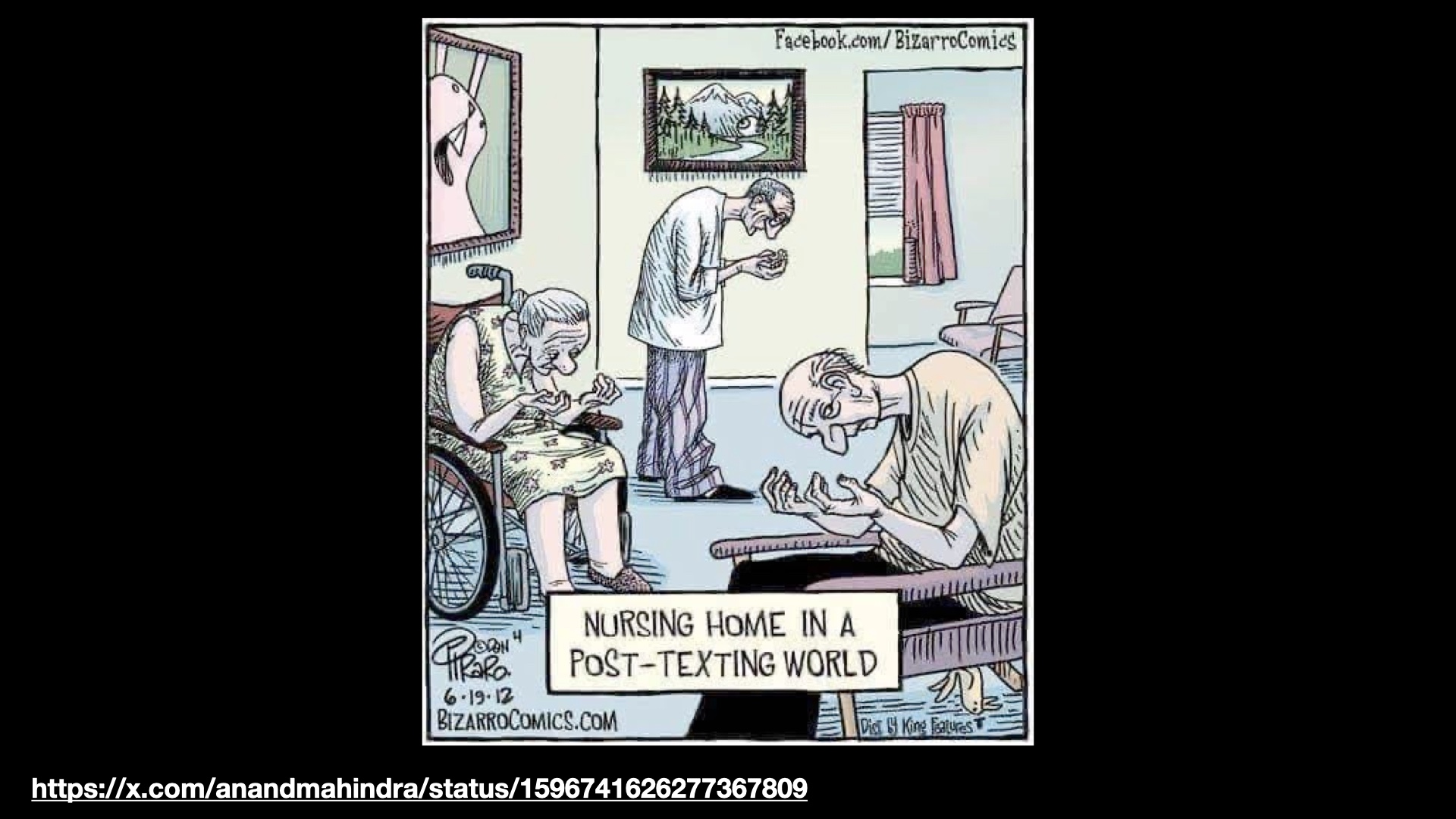
|
And in many ways, what I did was to work towards this future, one where more clicks are generated and humans are reduced to clicking machines # |
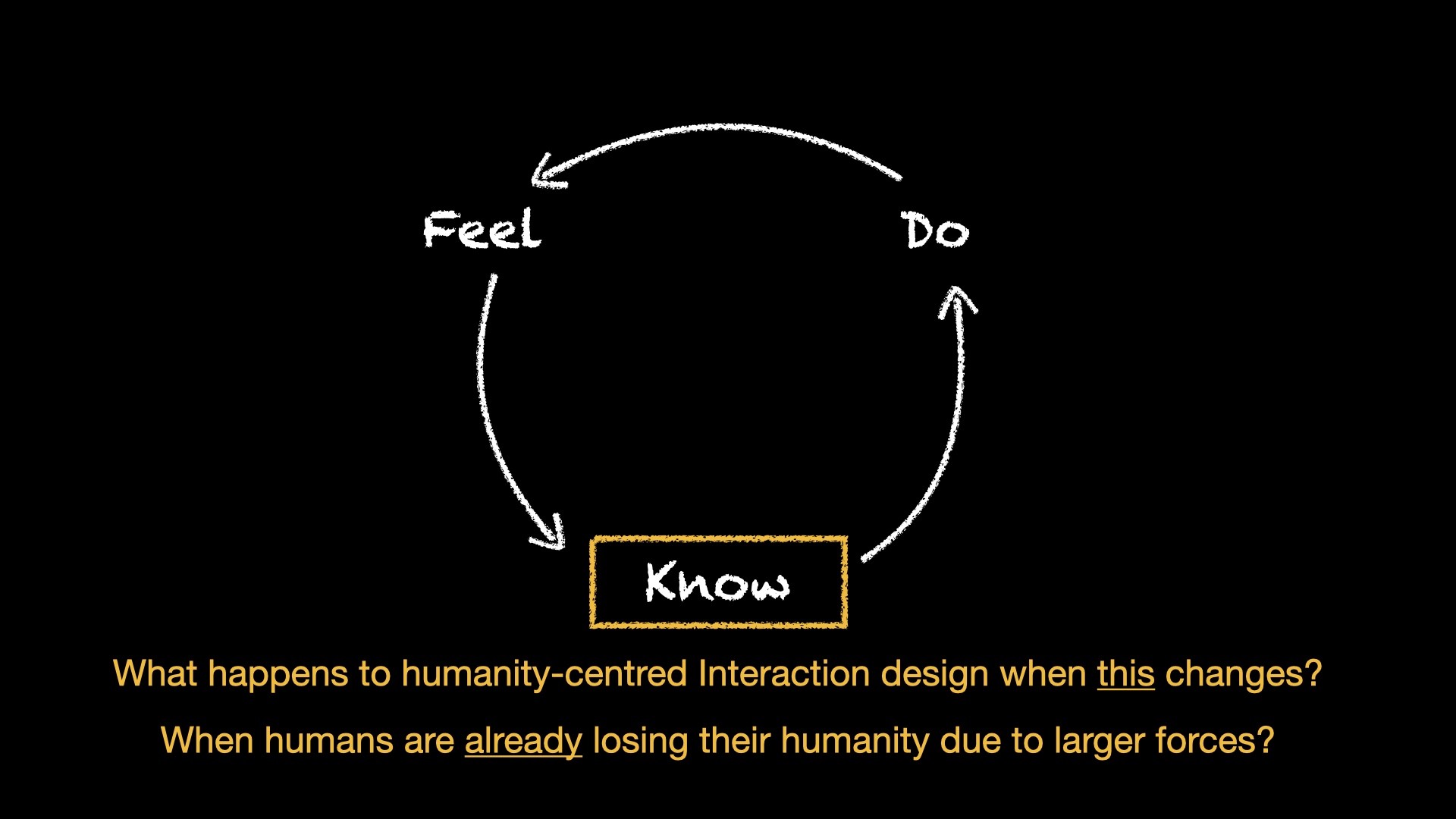
|
And this brings me to interaction design: is it dead? We all believe in humans, but what if humans already don’t know what is means to be human, because we are already losing our humanity due to larger forces at play? # |
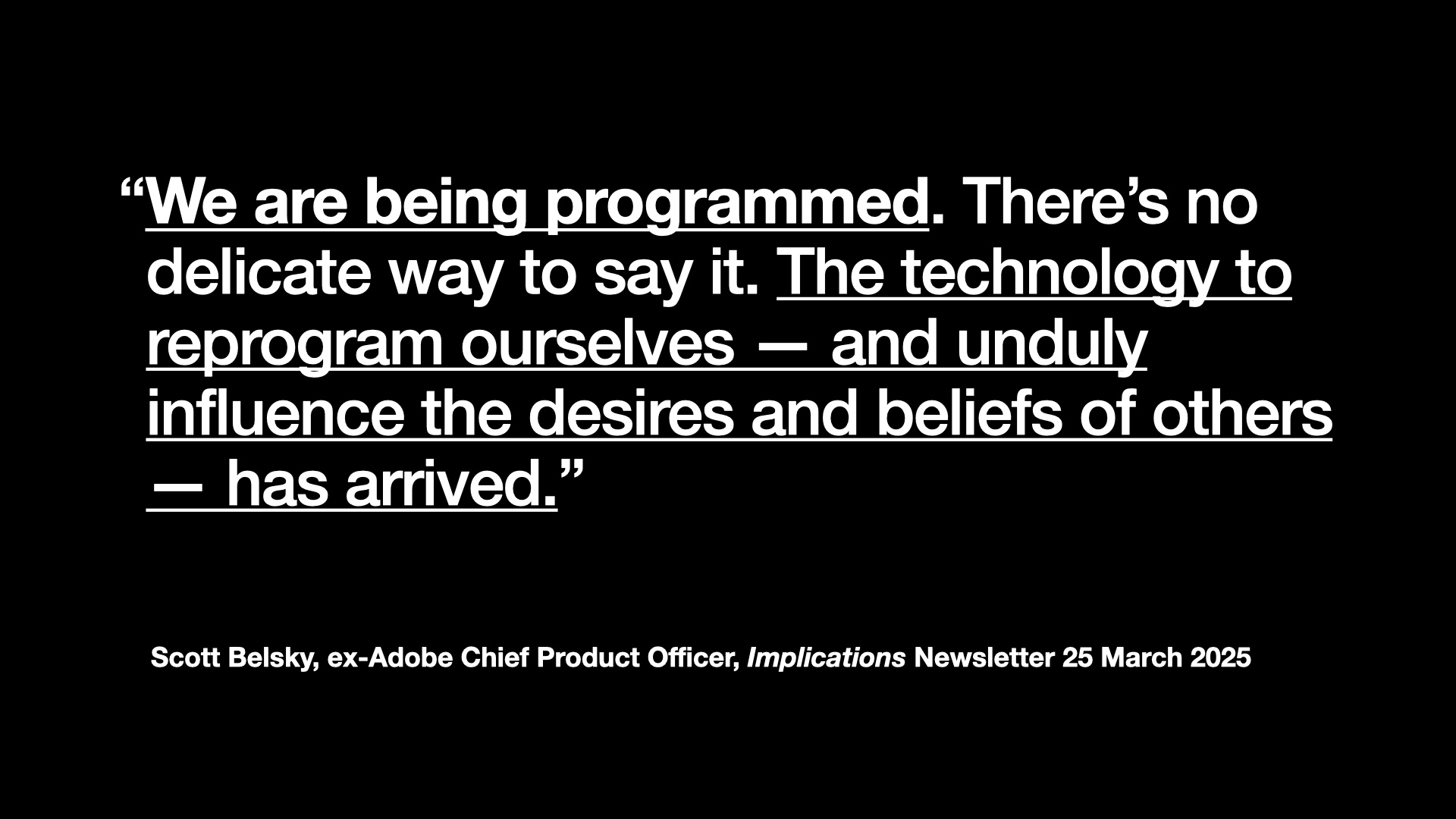
|
Scott Belsky is a former founder and chief product officer at Adobe, and he wrote this about AI. But I think this is already true, given what I saw on the backend of foodpanda. # |
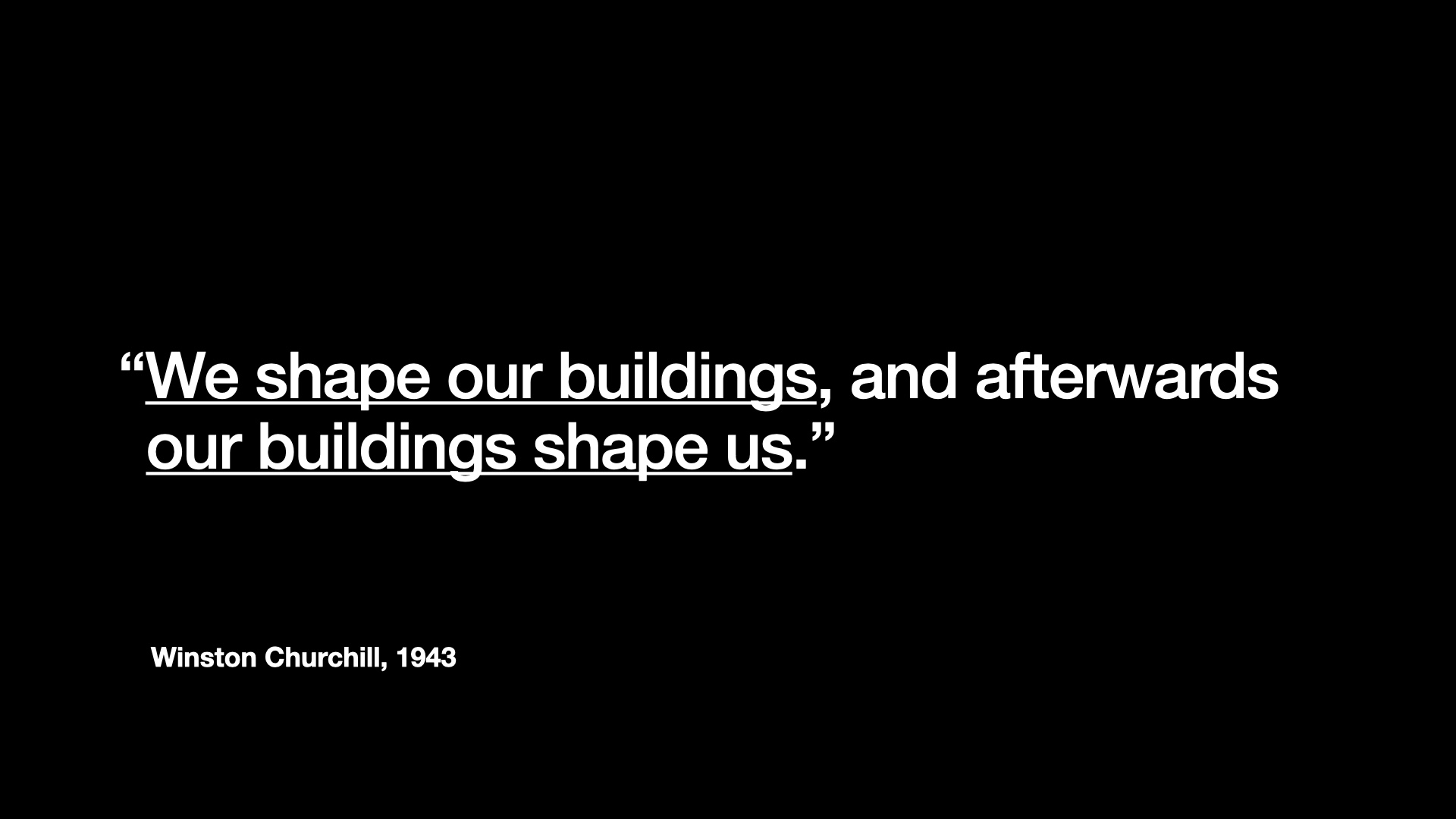
|
We already ARE facing the consequences of “our buildings shaping us” # |
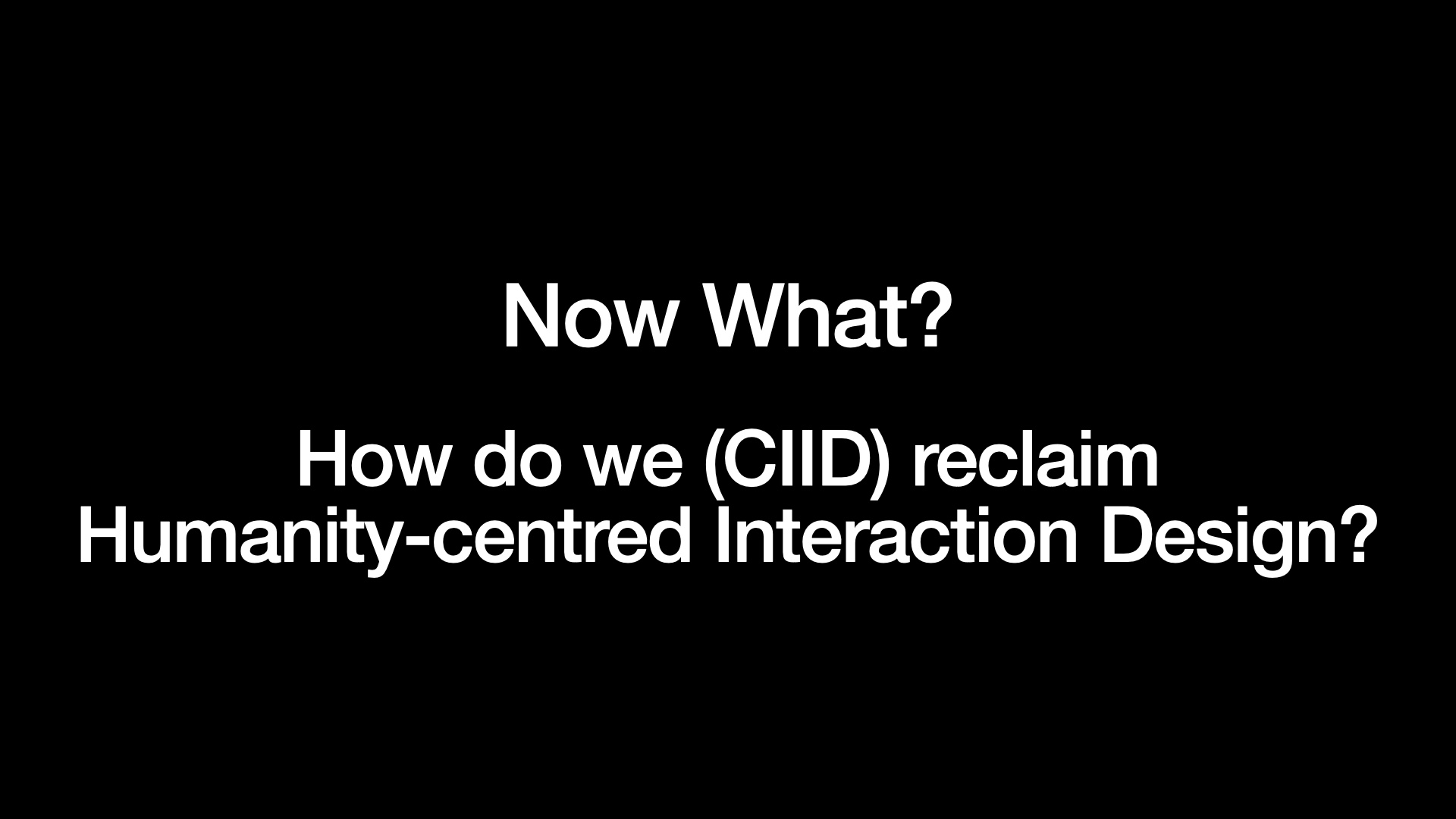
|
So, now what? How do we reclaim humanity-centred interaction design? I have a three hyptheses and 7 provocations to share. # |
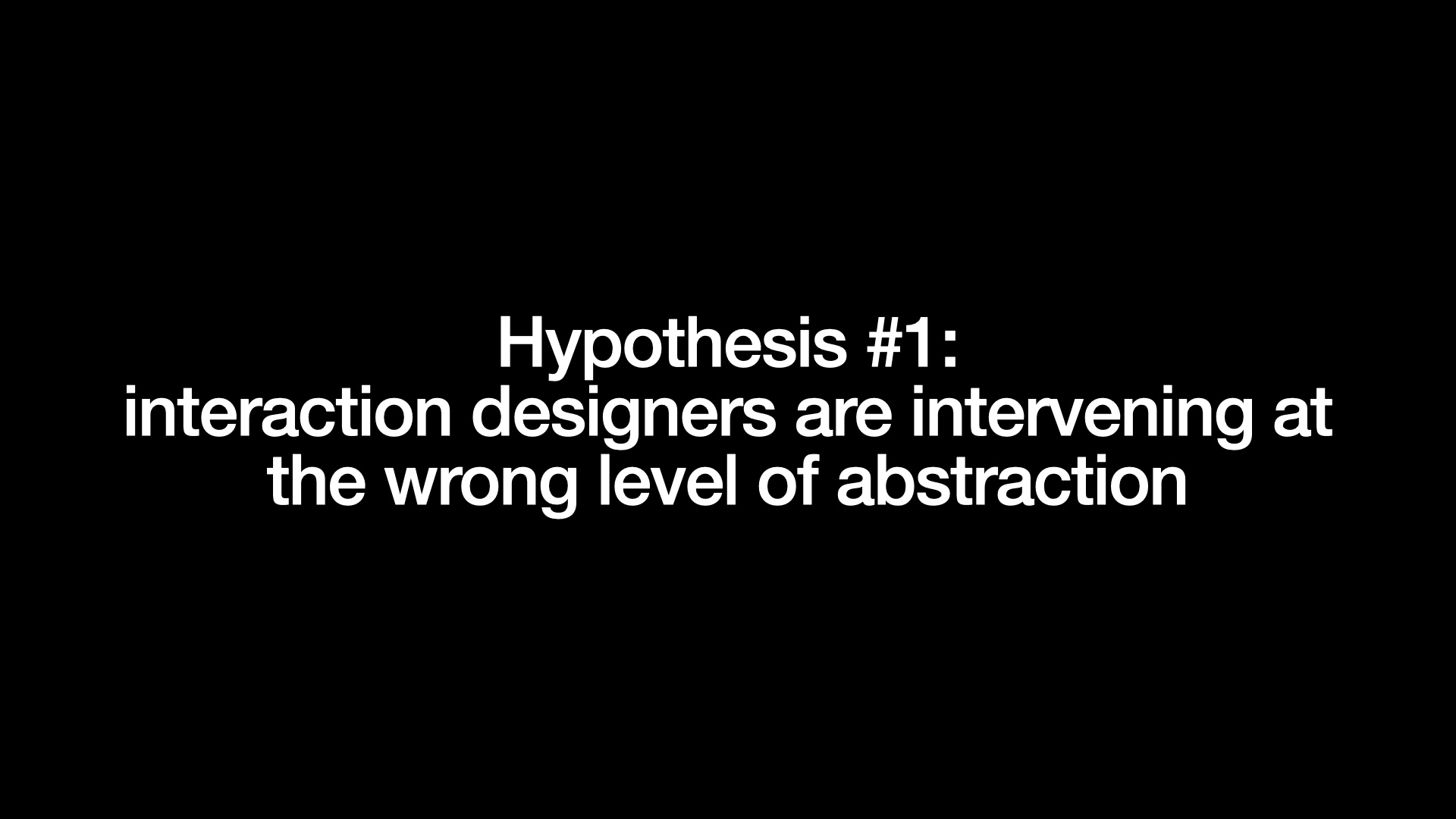
|
As someone wise once said to me “when you’re stuck, zoom in or zoom out”. And my first hypothesis is that we, interaction designers, are intervening at the wrong level of abstraction. # |
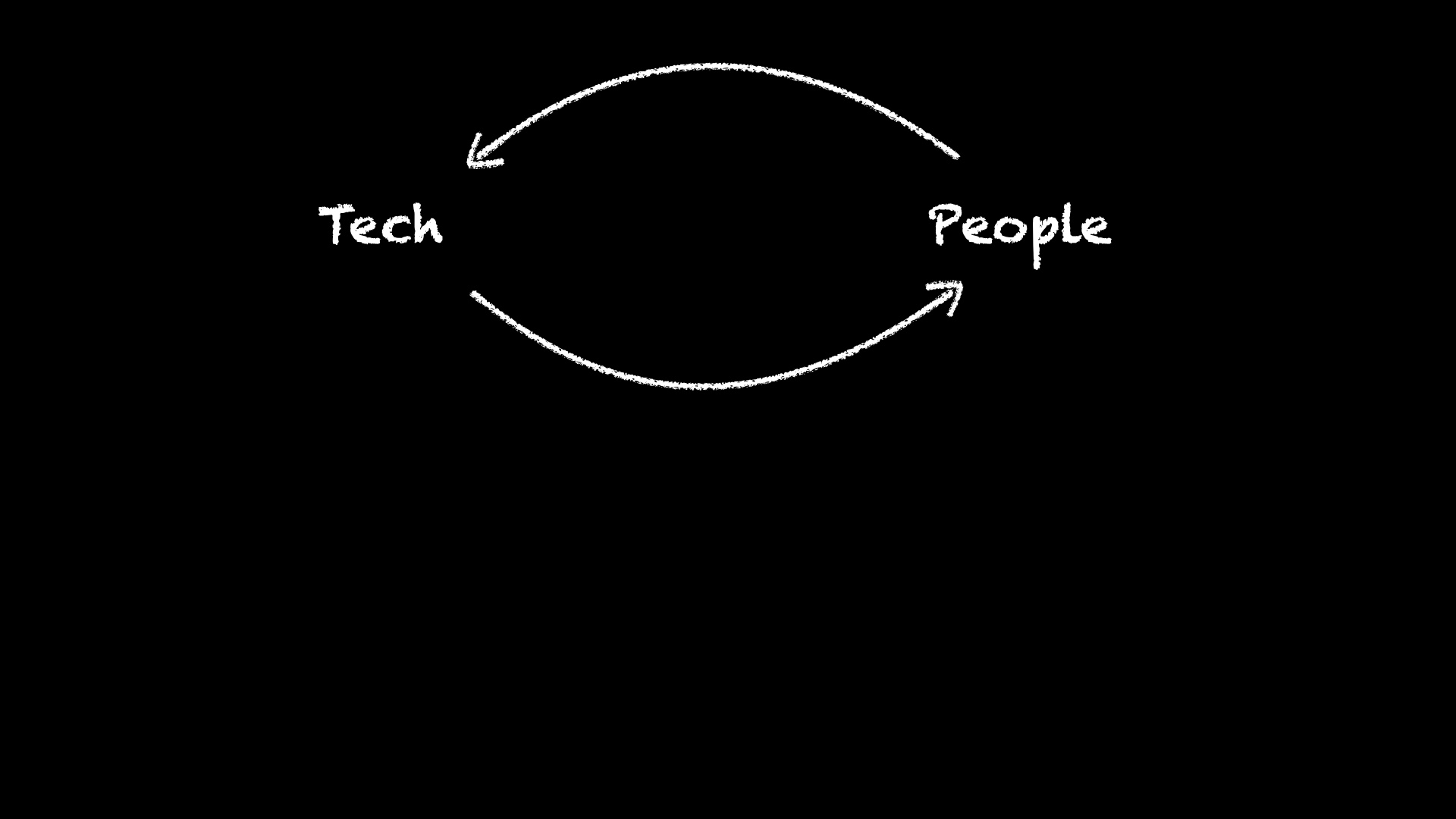
|
This is the level of abstraction we tend to focus on: how tech influences people’s behaviour, and vice versa. # |

|
What we miss out on, is that both tech AND people are also influenced by the driving forces of capitalism. So, if we want to make a change… # |
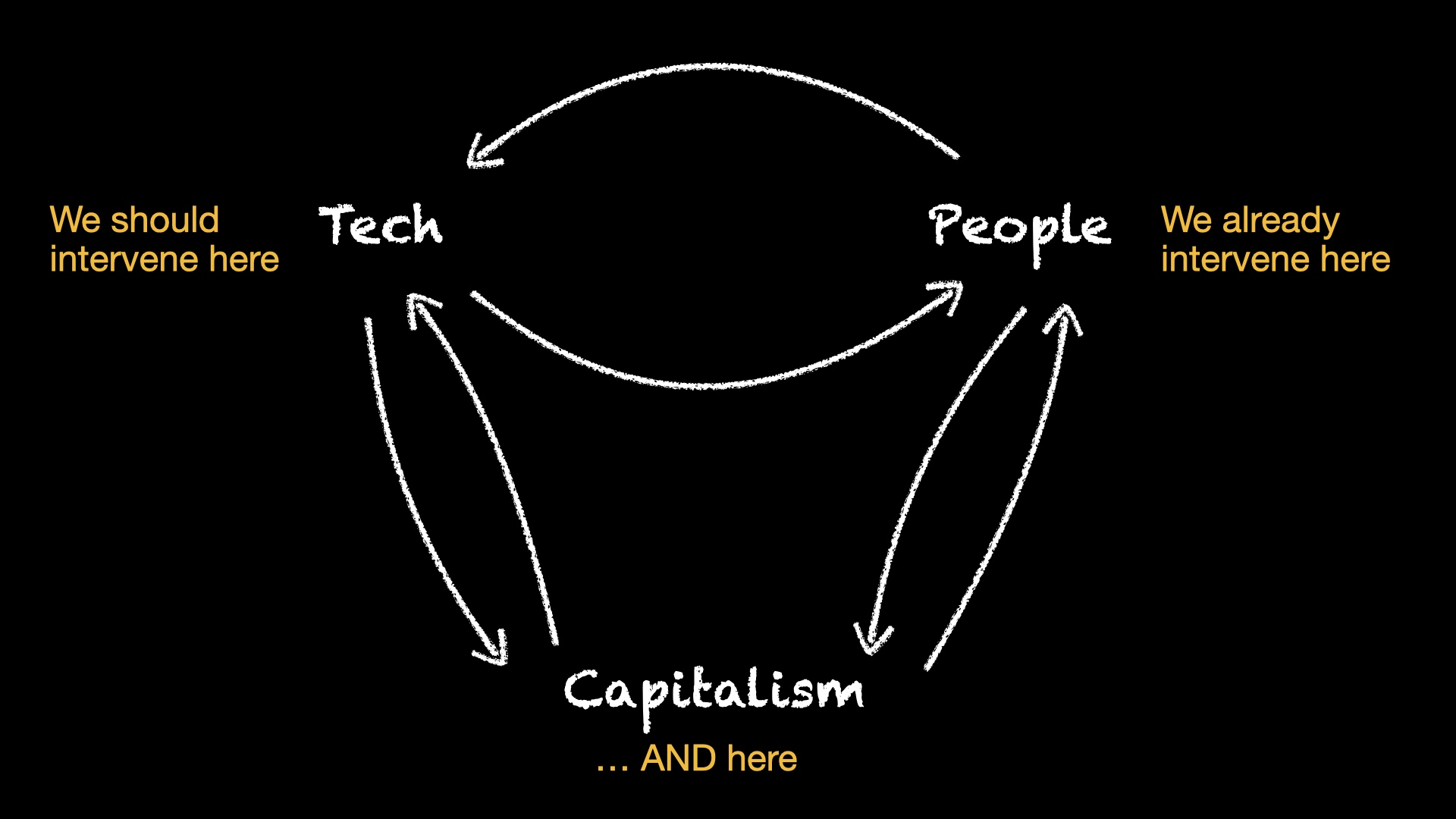
|
… we need to ALSO intervene at the level of capitalism. # |
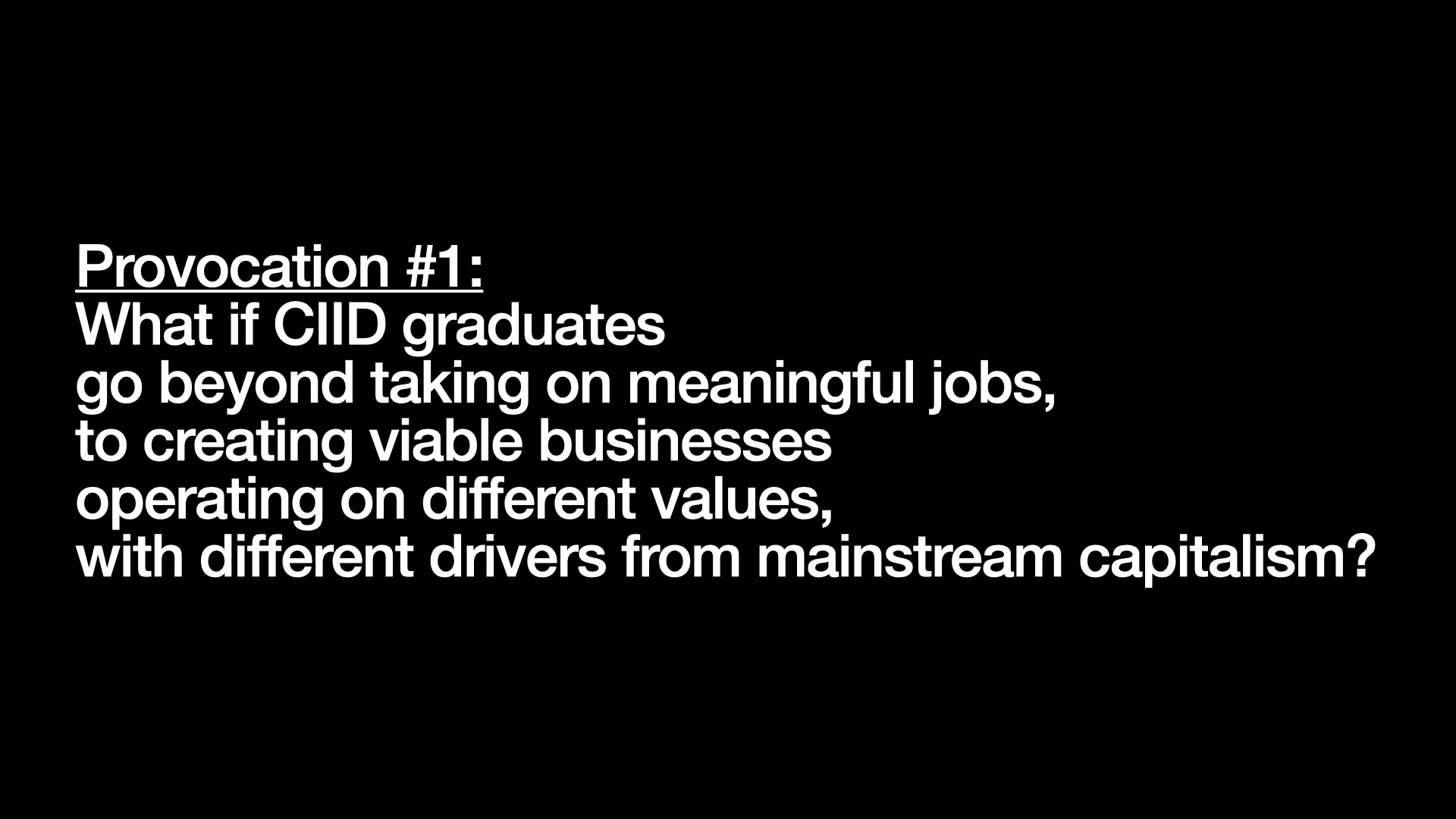
|
… which leads to my first provocation. Maybe CIID graduates need to go beyond jobs, to creating businesses operating on different values and drivers. Why? Change needs to happen at the capitalistic-system level, since that is now the main driver of human interactions. # |

|
three examples of value-driven businesses which are not the typical capitalist businesses. 1. Richard Cadbury ran Cadbury Brothers with his brother George, but also created the Bourneville “model village” for the employees at Cadbury’s chocolate factory. “The Cadburys were particularly concerned with the health and fitness of their British workforce, incorporating park and recreation areas into the Bournville village plans and encouraging swimming, walking and indeed all forms of outdoor sports.” 2. Jaswantiben Jamnadas Popat: Woman Behind The Lijjat Empire. She and seven half-literate woman started a business in 1959's Bombay, India with Rs. 80 ($1.50 in today's money) which reportedly had an annual turnover of $109 million as of 2018 with 43000 employees, focused very much on empowering women in the slums of India. 3. 37Signals started with Jason Fried hiring David Heinemeir Hansson to make an app called Basecamp. They eschewed all external funding, pioneered the monthly subscription model for SaaS (as their bank refused annual payments), and refused all VC funding, becoming a fully remote sustainable software business. They are the OG “indie hackers”, which is the term used to describe independent software not created by the big tech firms. # |
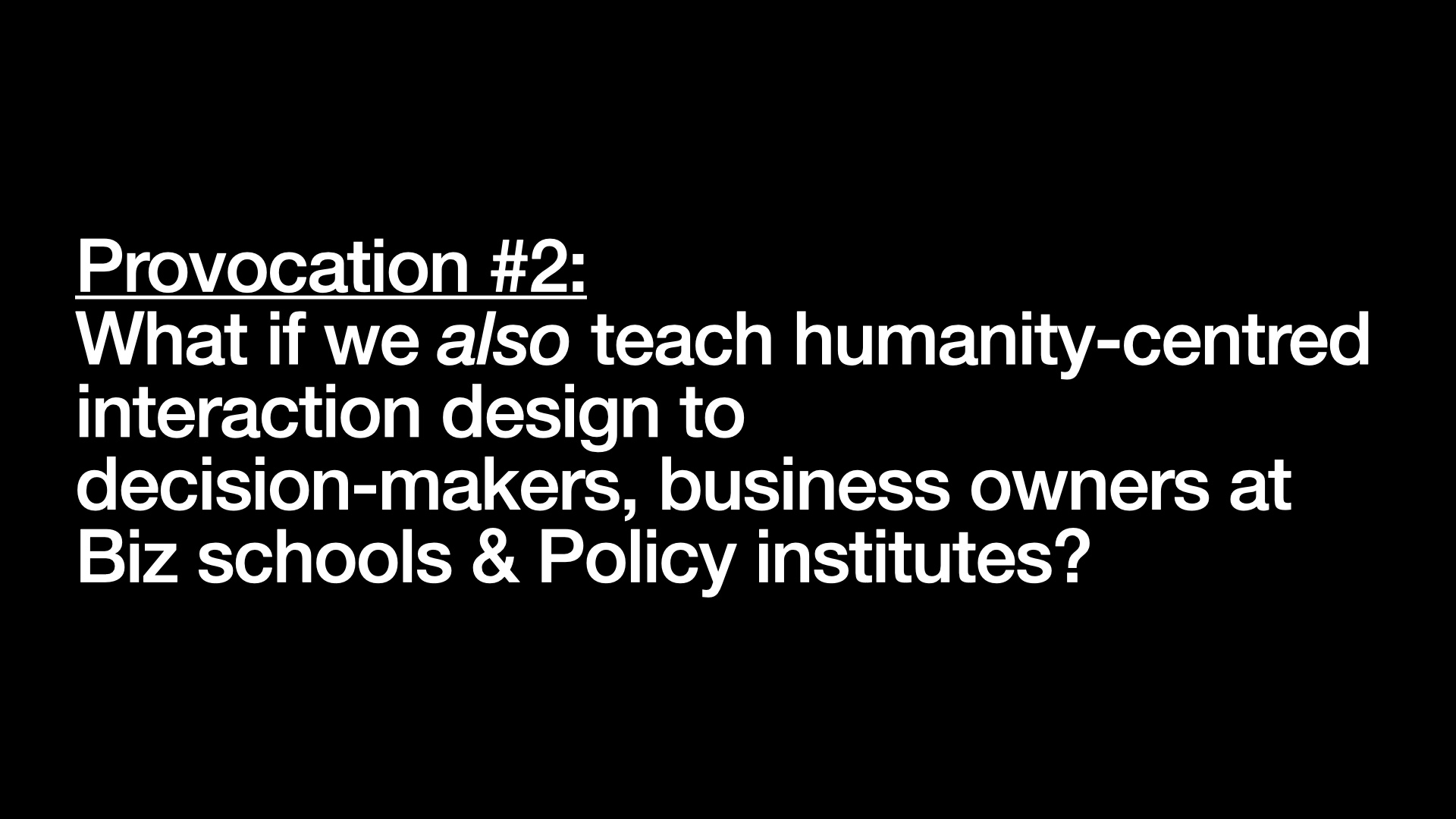
|
Beyond creating businesses, the other provocation I have is for CIID to also teach interaction design to decision-makers at business schools and policy institutes. Why? Most legacy decision-makers are NOT designers, and won’t be for quite a while. So designers in public and private sector bureaucracies will need a supportive environment to grow, flourish, & sustain change. The ultimate failure of Xerox Parc wasn’t with Xerox Parc, but with Xerox. # |

|
I have a story about this lady, Dawn. Dawn is my ex-colleague from EDB, and was from the logistics sector before she joined EDB. She was posted to Europe as a Regional Director around 2015 or so. While there, the International Director (her boss) had started an initiative for EDB’s global operations teams to explore using the business model canvas, to understand new business models. Dawn was unimpressed, as it seemed to be a distraction from our main work. Then, Dawn was sent by EDB to study at Stanford for the Sloan programme there. While at Stanford, Dawn also attended a couple of Stanford d.School modules. THEN, she finally understood what her boss was trying to do, and she saw the value of design thinking in our work. When I came back from CIID to EDB in 2020, she approached me to ask me to adopt a human-centred design approach in facilitating an employee-engagement discussion in her larger division. Dawn is now the Executive Director of Design Singapore. # |
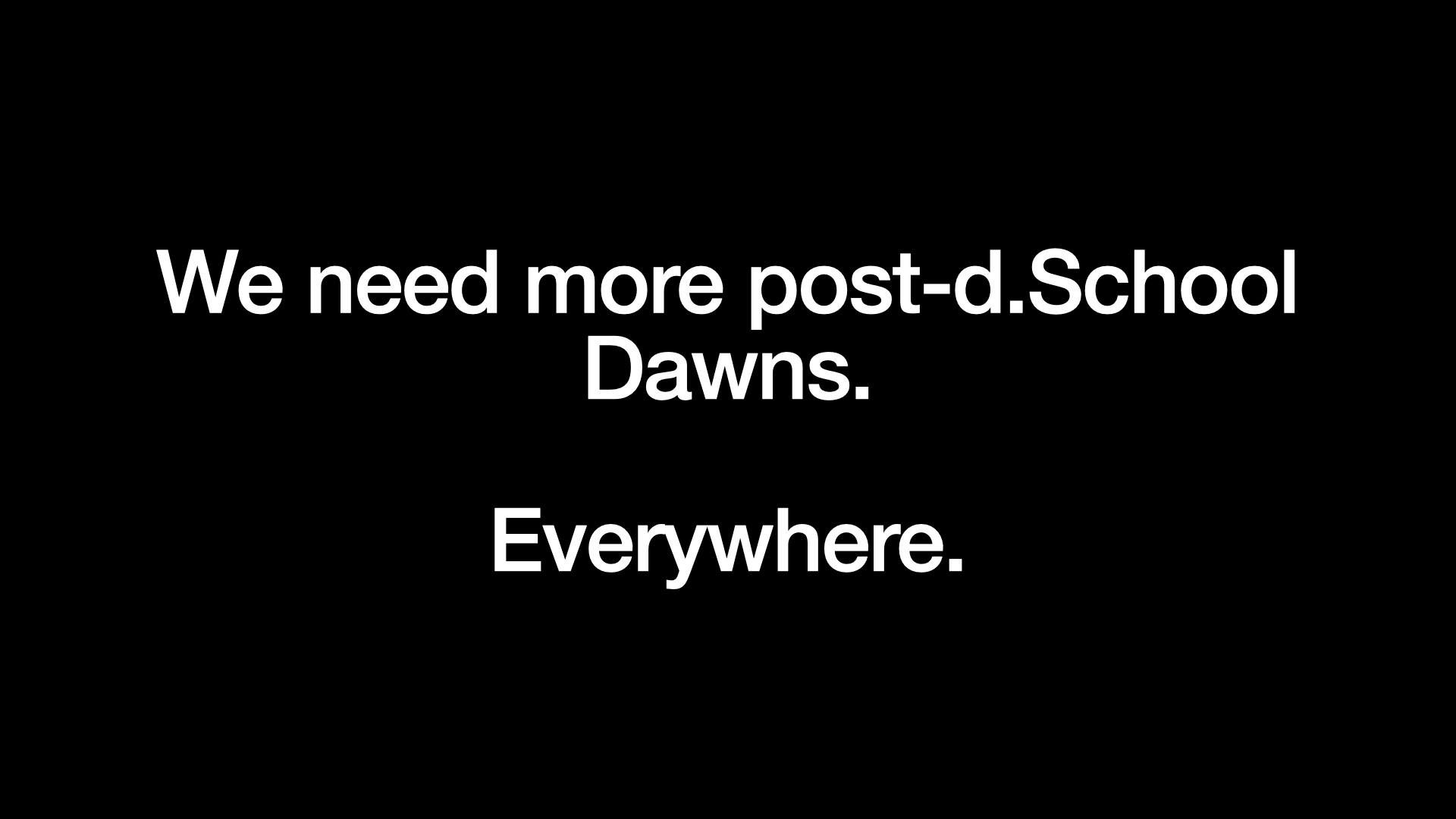
|
Earlier yesterday, Dan Hill spoke about the need for designers in public service. I fully agree. But what I think Dan is missing out is that: for designers to survive, you need supportive pre-existing conditions. The most critical in any bureaucracy is a supportive boss, like post-d.School Dawn. Would CIID have been able to work with Cookpad and Falck, if Rimpei Iwata and Jacob Riis were not onboard? So CIID needs to plant more post-d.School Dawns. # |

|
My second hypothesis is that, in order to effect positive change, interaction design needs to manipulate the global system through the points of greatest leverage. # |

|
As I flew here, I was watching the latest BBC nature documentary on Asia, narrated by Sir David Attenborough. Asia is the world’s largest continent, and contains more than half of humanity. It also contains the highest mountain ranges, and more importantly, the growth of Asian consumption is (more likely than not) the cause for the recent environmental degradation faced, globally. Even now, Chinese fishing fleets are clearing out the oceans off Latin America, just to feed the voracious Asian demand for fish. So, how is CIID and interaction design affecting Asia? # |

|
How can CIID impact Asian consumers and markets? And can CIID afford not to, given that Asian markets and consumers are (quite clearly) one of the key leverage points for the global capitalist consumption system? Related to this, is the fact that in Asia, most Asian consumers don’t care about sustainability AT ALL. # |
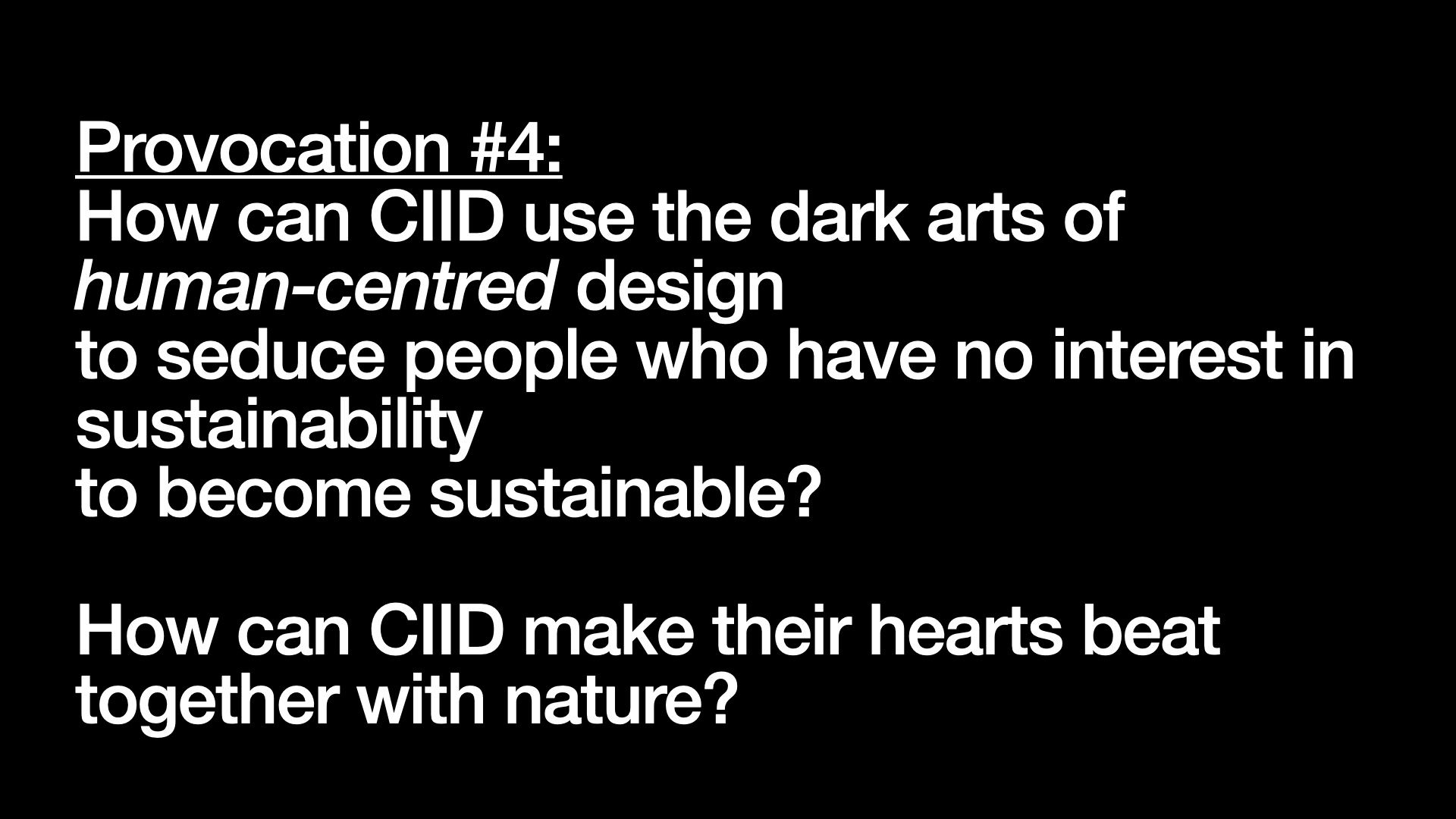
|
… so how can CIID use human-centred design, to seduce (I use this word deliberately) people who have no interest in sustainability, to become sustainable? Or to quote Paul Bennett with his excellent definition of interaction design: how can CIID make these people’s “hearts beat together” with nature? We don’t necessarily label things “sustainable” but just make things so good and convenient that it attracts people who don’t care? # |
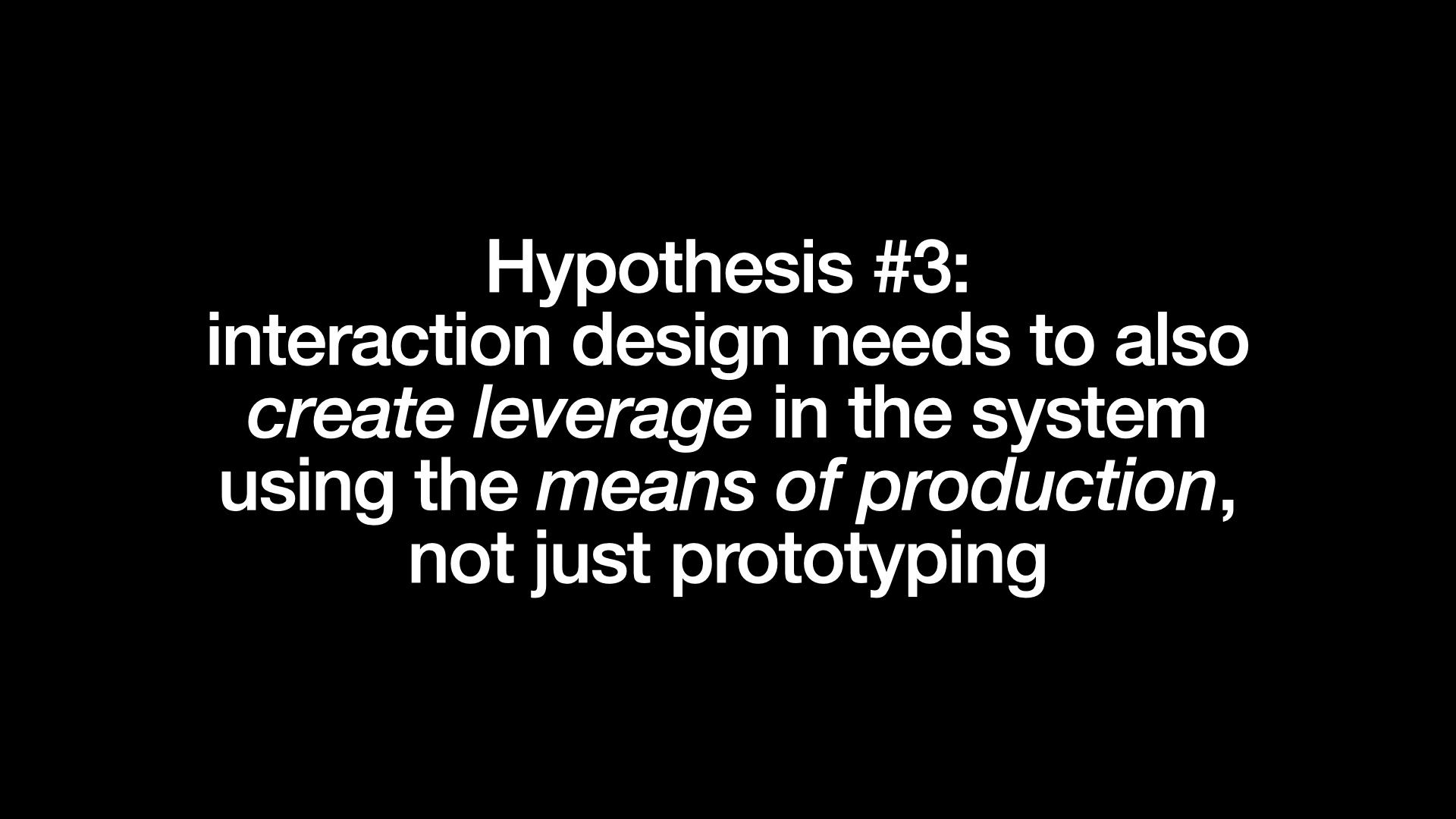
|
The last hypothesis I have, is that interaction design needs to create leverage, and that means going beyond mocks and prototypes, to using the means of production. Before I move on to my next provocation, I need to outline an interesting concept I came across on Twitter, which is the idea of permissionless vs. Permission leverage # |
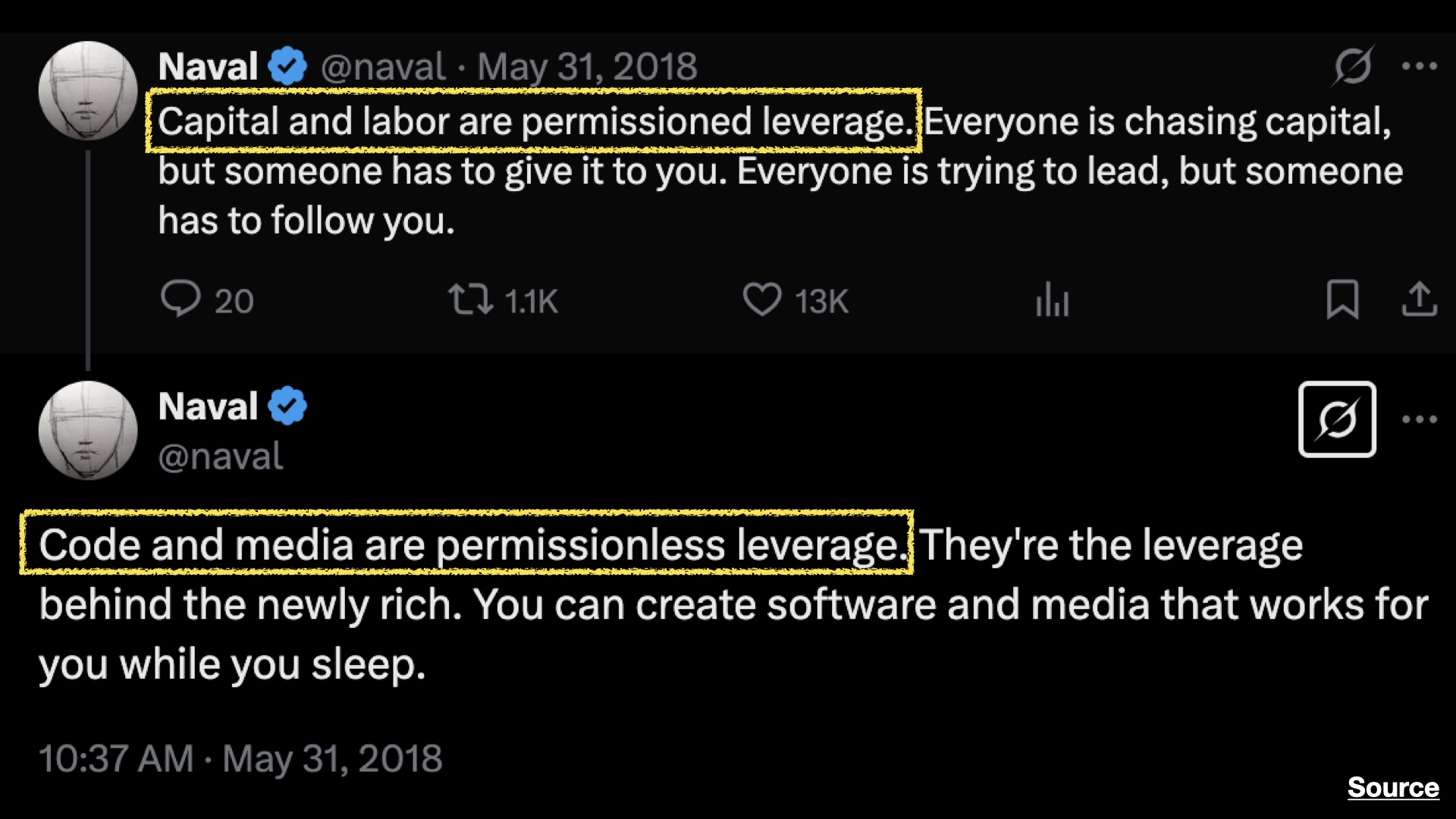
|
This idea came from Naval Ravikant, and it’s something very relevant to the next provocation. The idea of permissionless leverage is that, it is leverage you can create and use, without having to ask for permission from anyone else. Capital and labour both require permission. But code and media do not. # |
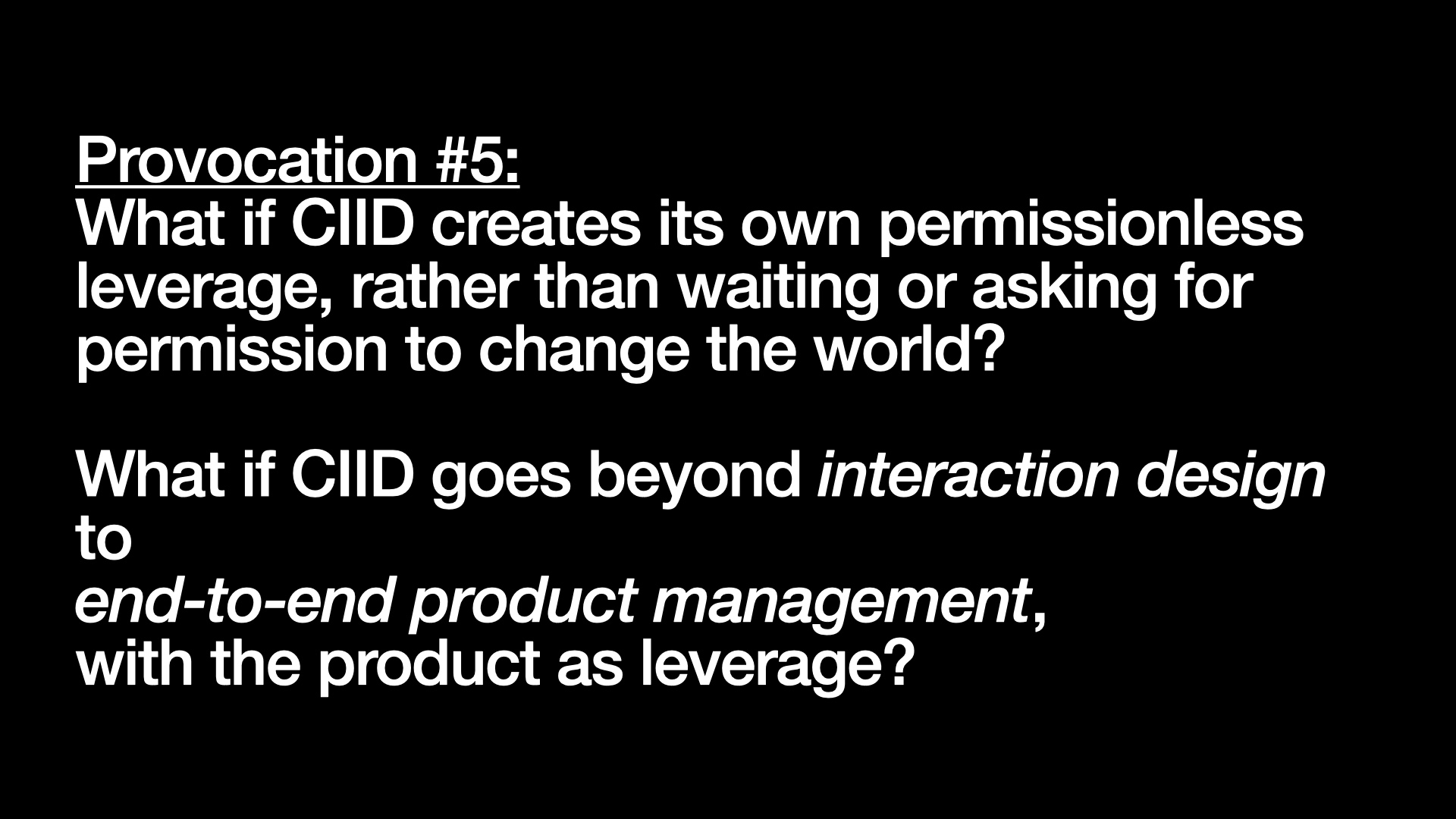
|
Since a superpower of interaction design is the ability to make things, what if CIID creates its own permissionless leverage? And as a natural corollary, what if CIID goes beyond interaction design, to creating products as leverage (and thus focusing on end-to-end product management)? # |
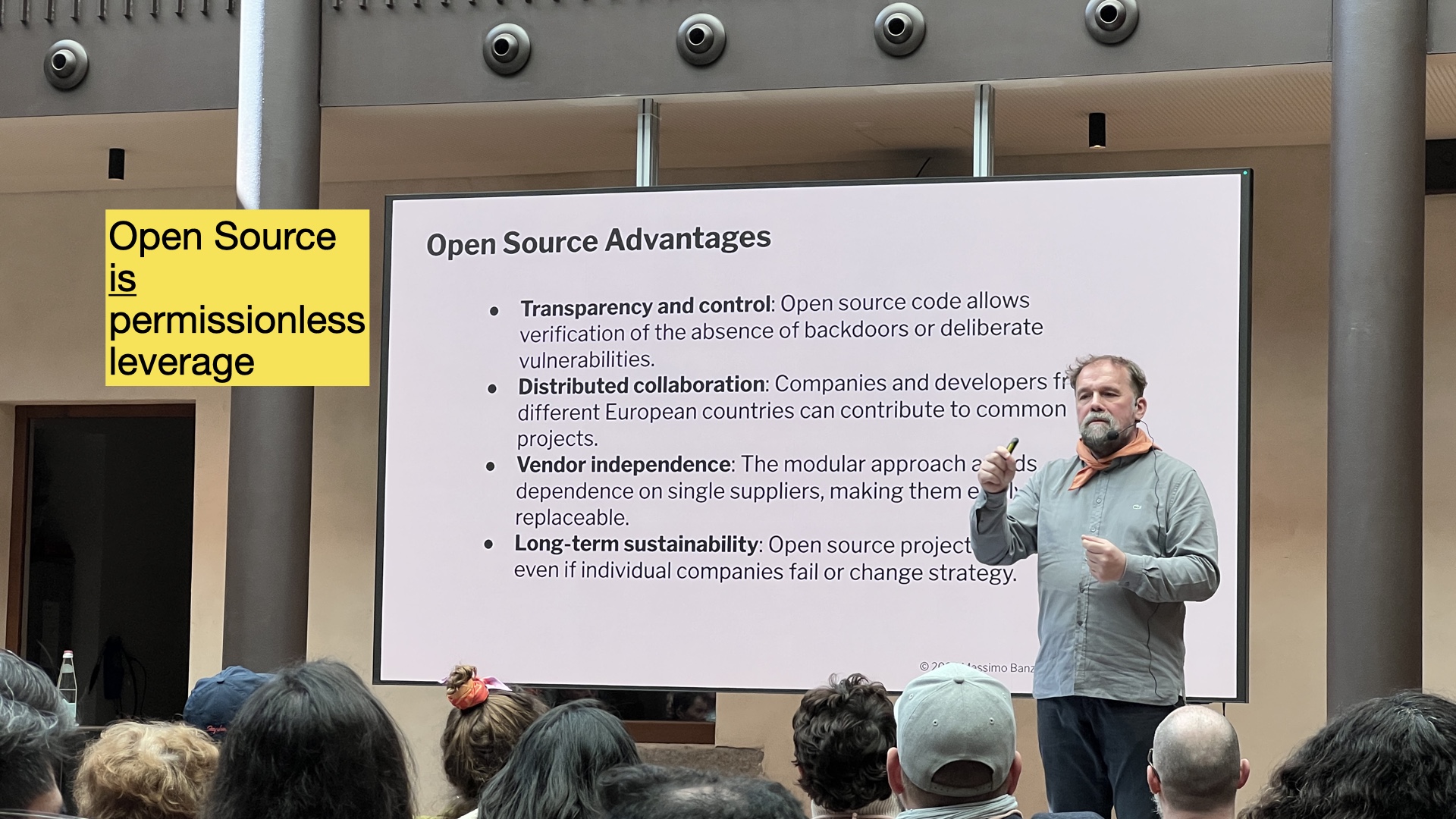
|
And to circle back to Massimo Banzi’s brilliant talk on open source, I have to highlight here that open source IS permissionless leverage, which CIID and interaction designers can use. # |

|
A consequence of the previous provocation is one which might affect IDP students. If CIID goes beyond interaction design to creating products, then what if CIID students are expected not just to create mockups, but to ship actual products using AI tools to build them? Why? AI is leverage, which allows you to collapse your talent stack, & move fast, & test directly with customers/users, potentially at scale. # |
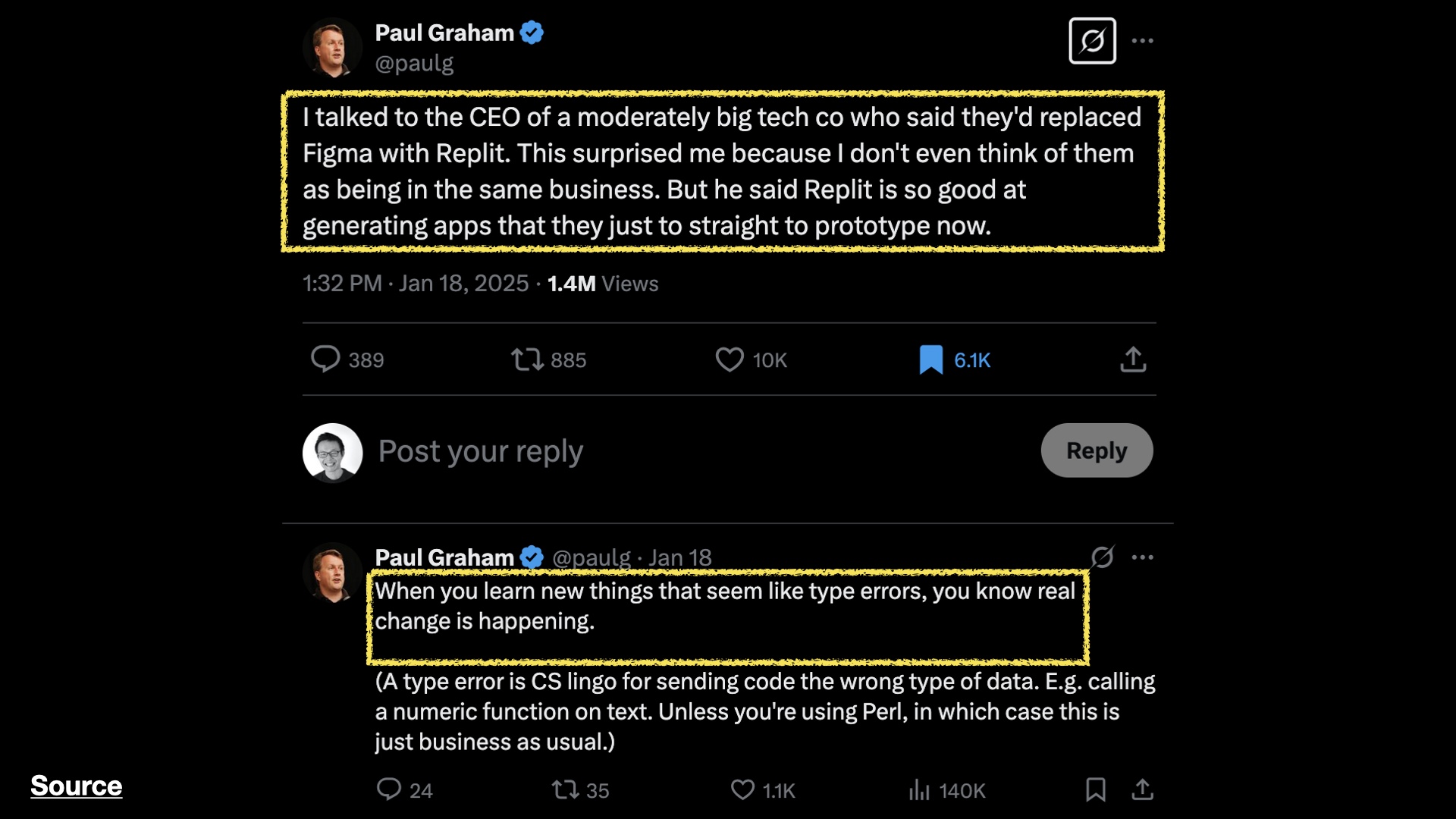
|
I thought this quote from Paul Graham of Y combinator was super interesting: that a CEO of a middle tech firm has replaced Figma with Replit, as they just go straight to building the apps directly, rather than creating Figma mockups. # |
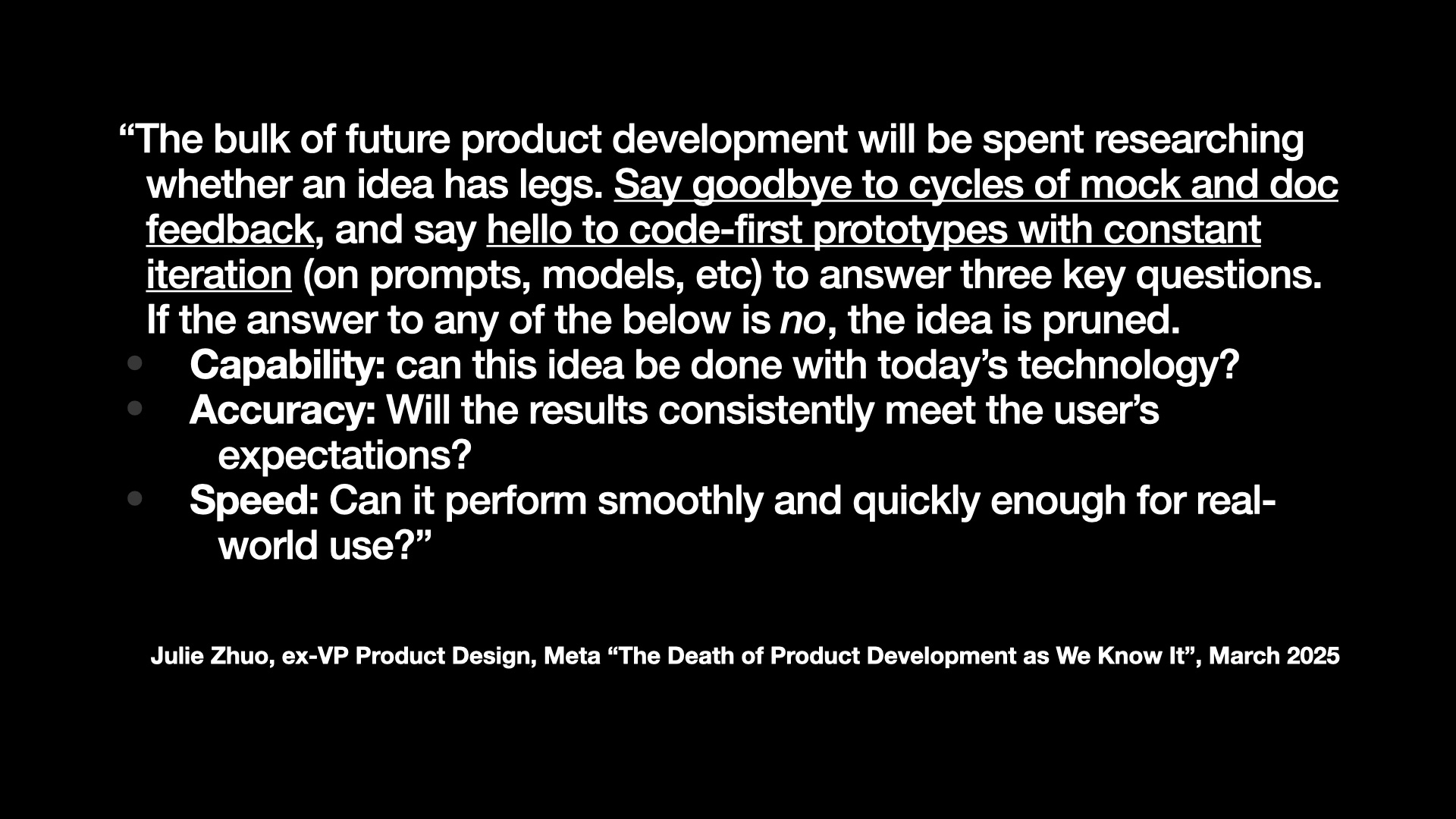
|
Julie Zhuo is an ex-VP of Design at Meta, and in a very recent newsletter, she proposed that the rise of AI-tools means we n)o longer have mock-and-doc, but an approach she calls ‘Prototype-and-prune, code-first prototype’ # |

|
… and this is all good. There’s no better time for small teams to scale quickly, for global impact # |

|
My last provocation is also a consequence of CIID moving away from interaction design, to product management. What if it is no longer just wizard-of-Oz prototypes, but actual working products which are first beta-versioned in house? # |
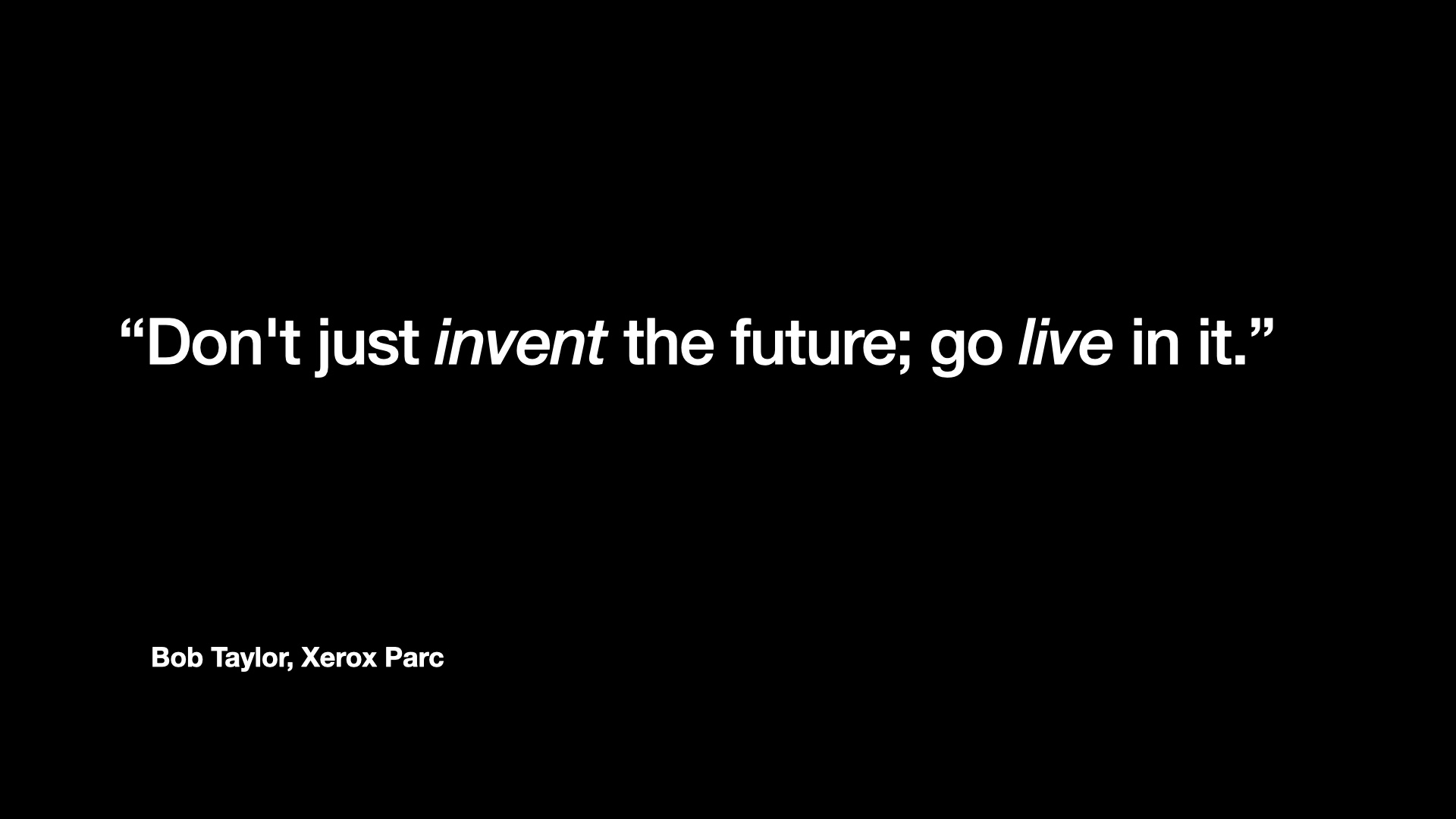
|
Maybe that’s something we can learn from Xerox Parc, which did change the world, even if Xerox didn’t succeed. And how Xerox Parc did so, stemmed in large-part from this man and his quote. Bob Taylor nudged the Parc folks to actually use the stuff they invented. # |

|
… and Alan Kay also credits Butler Lampson for pushing the Parc team to engineer products for 100 users, and to use their own creations directly. # |

|
… which, Alan Kay claims, is the reason why many of their most important projects became stable, usable and user-testable ahead of schedule, due to the very tight & direct feedback loops. # |

|
Everything I’ve spoken about so far, ultimately, it is really about interaction designers NOT having power. # |
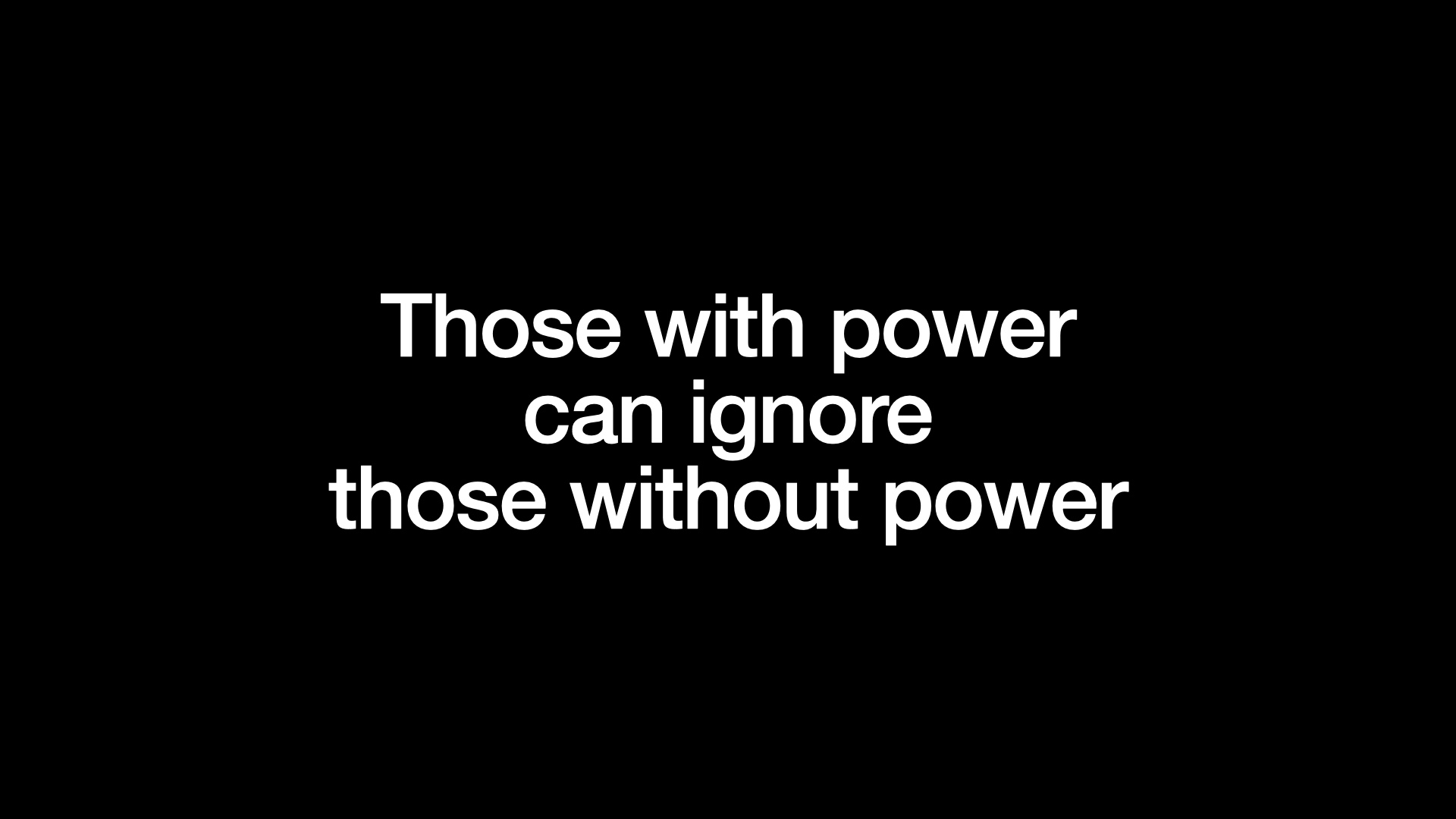
|
I define power very simply as this: those with power can ignore those without. # |
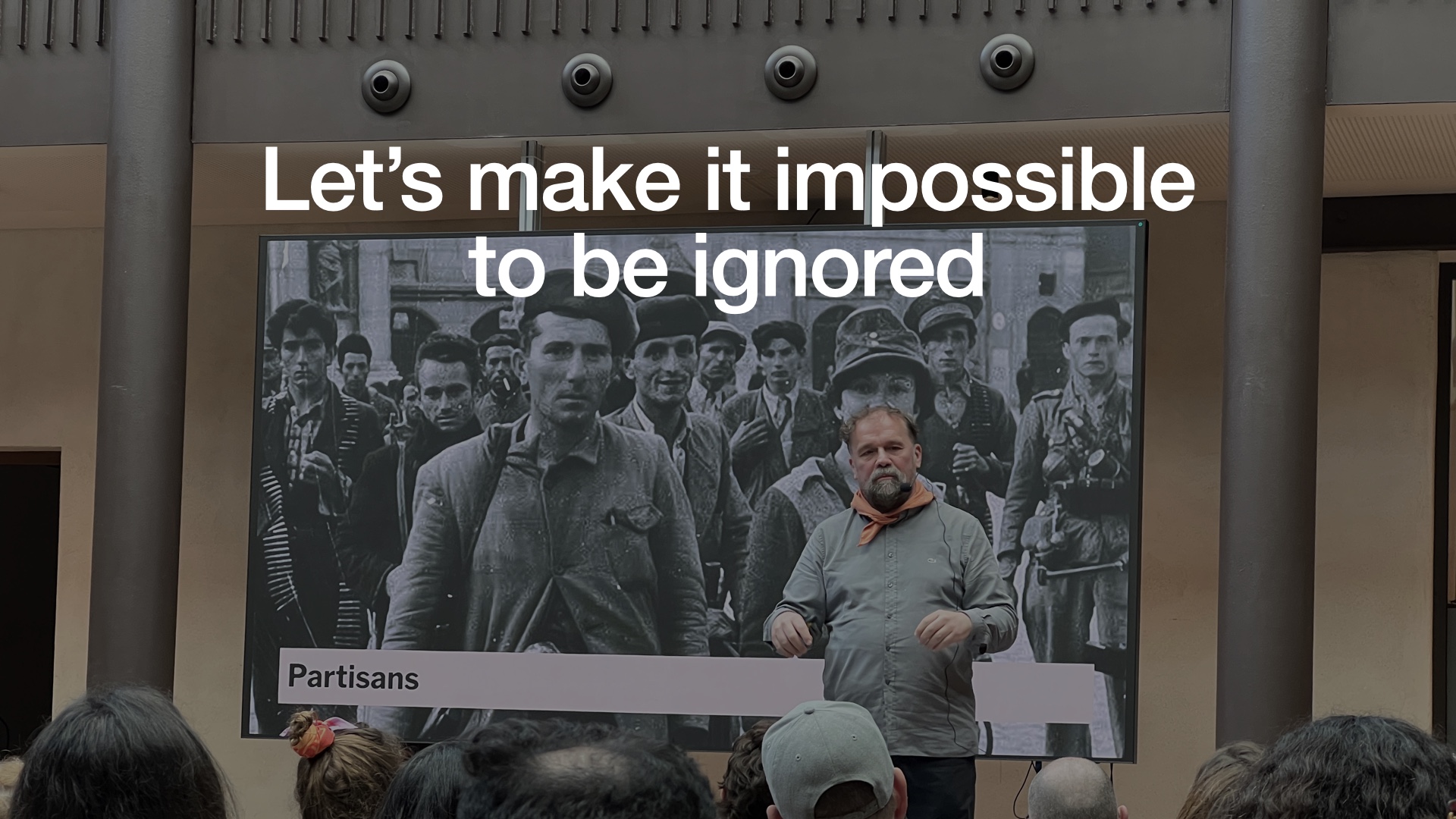
|
So let’s make it impossible to be ignored, like the partisans who used to roam these hills before. # |
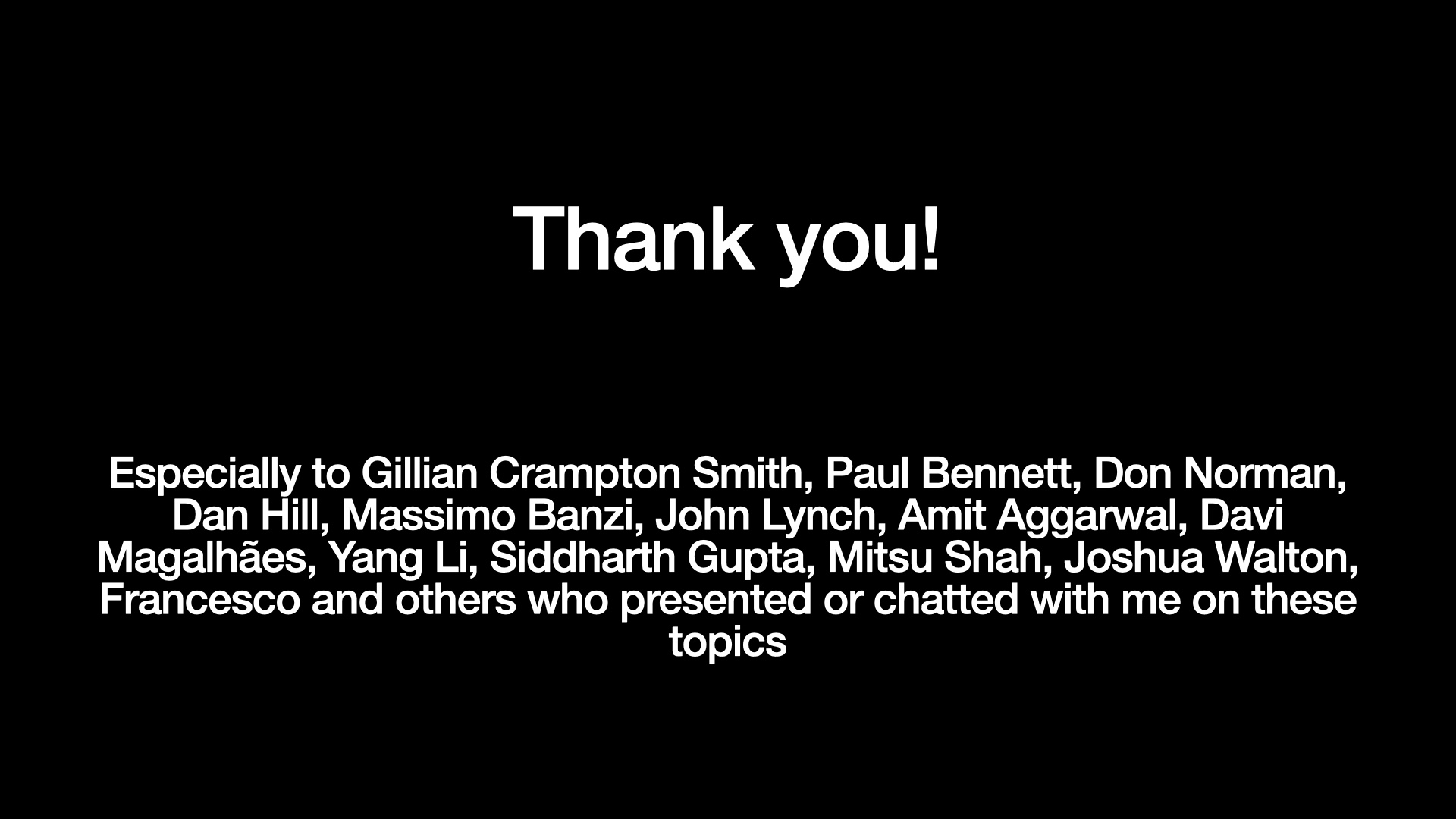
|
Thank you! # |